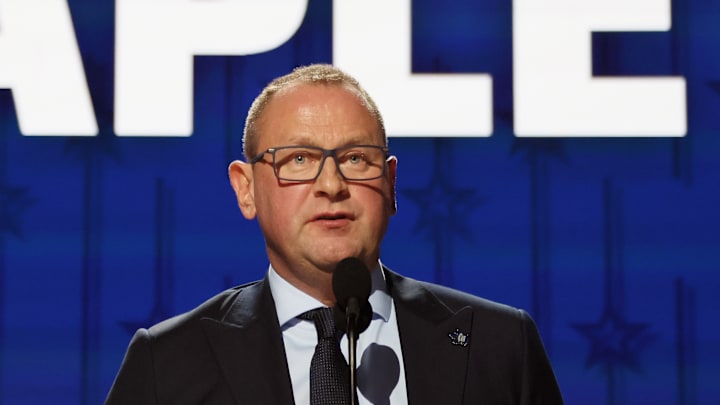Trades
Grade: D
There is a slight disclaimer for Treliving’s trading grade; I do not agree with his philosophy for the most part which likely pushes me towards disliking some of his moves right out of the gate. As is the case with most teams in the Leafs’ spot and par for the course in a new GM, he was fairly quiet on the trade market for most of this season.
His first trade came over four months after assuming his post by sending Sam Lafferty to the Vancouver Canucks for a 2024 fifth round pick.
This trade was largely necessitated by his summer spending and although Lafferty seemed to be the odd man out heading into the season, he probably would have significantly helped the fourth line that struggled for most of the year. He has also shown the ability to play up-and-down the lineup which would have been valuable to have over the course of the season. At $1.15 million, he also would have been cheaper than a few other depth players on the Leafs which would have helped the cap situation.
His next move didn’t come until March 1st, this is even with many struggles at different positions throughout the season.
He acquired Ilya Lyubushkin and the rights to Kirill Slepets in a three-way trade for a 2024 sixth round pick and a 2025 third rounder. The price was not high but Lyubushkin is not the player you acquire to throw on the top pair and there were better options available.
Then, Treliving acquired Joel Edmundson for a 2024 third and 2025 fifth. Again, not a steep price to pay but Edmundson is relatively ineffective in his shutdown role.
As evidenced by his pairing with Liljegren being one of the only net-negative xG% pairs Liljegren was a part of this season. He also acquired another shutdown defender in the way of acquiring prospect Cade Webber for a 2026 sixth round pick from the Carolina Hurricanes.
In the last trade of the deadline period, he acquired Connor Dewar from the Minnesota Wild for prospect Dmitry Ovchinnikov and a 2026 fourth round pick. This was one of the only trades I’d classify as a hands down good trade that Treliving made this season as Dewar was a key part of the bottom-six and helped form a much more effective shutdown fourth line.
Treliving standing pat at the deadline during one of the few Auston Matthews Prime seasons was inexcusable and negatively impacts his grade.
There were multiple impact players moved at the deadline, and the Leafs didn't get any of them. The Leafs were one of the NHL's top teams in the second half of the season and had both trade assets and cap flexibility, so not getting beyond the first round has a lot to do with Treliving's decision not to improve the team in-season.
His lack of impact moves and settling for lesser players at a similar price tag that many teams paid for better players does not help his grade in this aspect. He helped by addressing needs in some aspects and by acquiring a young shot suppressing forward in Dewar at a minimal cost, this mainly prevented him from getting an F.
He also opted to shed a lot of draft capital over the next few seasons; trading away six total draft picks and acquiring one. He also traded a prospect and acquired a prospect. on the positive side, the Leafs likely retain Dewar and have a prospect in Cade Webber to add to the system.
Again, my disagreement with his philosophy and the lack of success as a result plays a big part. Had he used these assets on one or more of the above mentioned players, I would view these trades in a much more favorable light. That is why his grade is a D.
